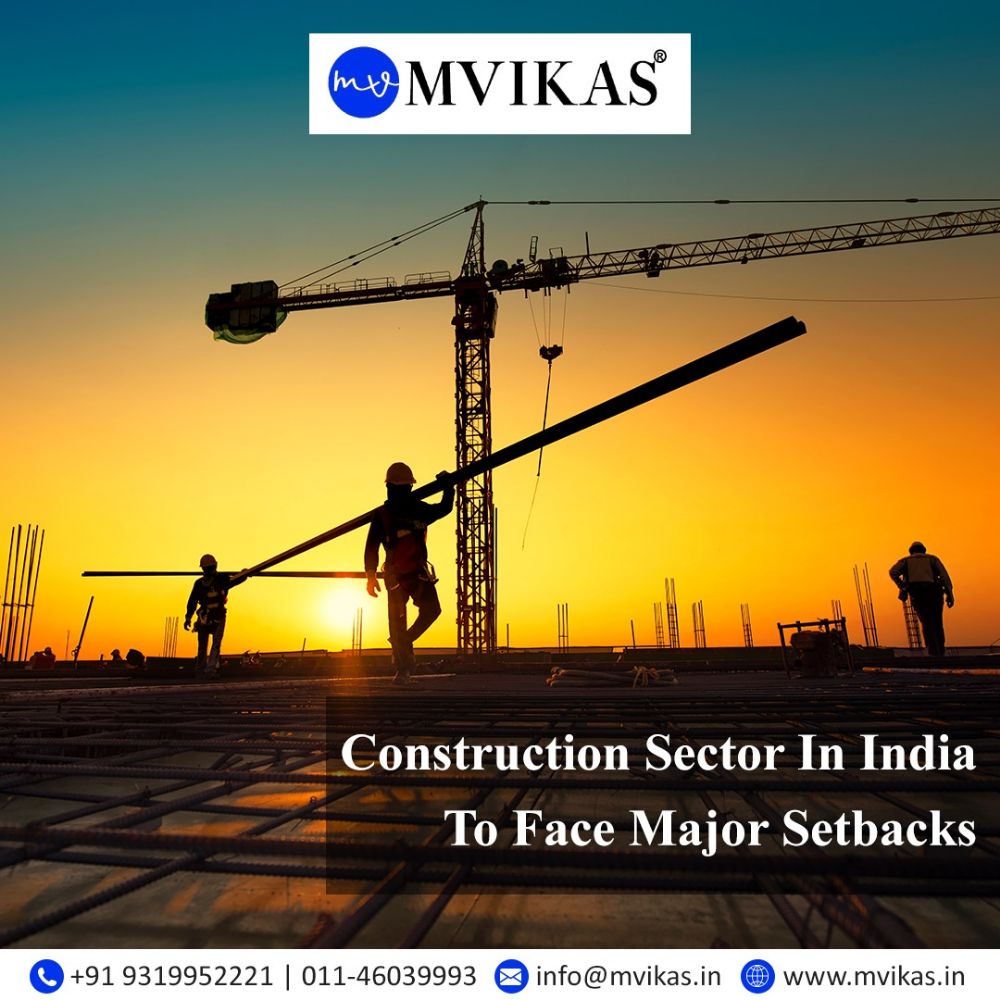Reachable at 9560662883  011-46039993 (Ext. 21 to 32) (10am - 06pm)
011-46039993 (Ext. 21 to 32) (10am - 06pm)
Construction Sector In India To Face Major Setbacks

The construction industry is one of India's most intense competitors, with a compound annual growth rate of 10% by 2027. We will be the world's third-largest construction market by 2025. The construction sector alone accounts for 9% of India's GDP, making it the second largest industry after agriculture. The Indian construction industry has faced significant challenges and successes due to central sector programs, new reforms, and foreign direct investments.
Challenging Faced by the Construction Sector in India
The following are the challenges faced by the Construction Sector in India:
- An increase in material costs
The cost of raw resources is rising. The primary cause is a lack of materials in the sector due to a disrupted supply chain. Furthermore, changes are being implemented by both the federal and state governments to stabilize the economy. An additional tax is being imposed, raising the cost of raw commodities. As a result, the prices are considerable, resulting in a high valuation of the real estate structures.
As a result, purchasers are less inclined to engage in the building industry. Adopting automated and sophisticated technology to promote customer satisfaction might be a mitigating approach.
- Environmental Protection
Nowadays, environmental preservation is significant for every sector, particularly the building industry. Even in other businesses, such as the board game industry, there is an emphasis on developing environmentally conscious products, such as green-playing cards for gameplay. Building projects are now required to conserve the local environment and cause little or minimal environmental impact. That is not the case in India since it is complicated to preserve the ecosystem due to soil erosion, floods, soil alkalinity, salinity, and other factors.
These considerations above make environmental preservation challenging for contractors and building organizations. Air and water pollution are also on the increase in the building industry. As a result of this, the government is forcing builders and construction businesses to take steps that have the least amount of negative impact on the environment, reducing their earnings.
- Project Underperformance
The Delayed Delivery Time has two important effects on the performance of construction projects: the risk of exceeding budget and the danger of failing to deliver within set timescales. Individual production challenges, such as adverse weather, or systemic ones, such as trade conflicts, cause it. These challenges not only slow down projects but also push people and machinery to sit idle, reducing productivity and increasing expenses for the contractor.
- Employee Protection
Globally, safety and security are becoming increasingly important. Employees and construction sites must be Covid-free to avoid the spread of diseases. Implement adequate safety measures within the building. Deploying many staff or construction workers may result in extraordinary illness outbreaks, hampered project completion, and avoidable delays. On the other hand, fewer personnel have a significant influence on deadlines and timeframes.
- Electricity Provision
The availability of energy is another issue for India's building sector. The need for continuous electricity supply is rising. Still, building companies and builders are battling in this process since receiving authorization from authorities might take a long time, forcing them to install captive power plants to supply electricity independently. This is not only a lengthy and costly procedure, but it also necessitates hiring highly qualified individuals to finish creating a captive power plant.
Because of the country's insufficient supply of energy, project completion times are significantly impacted, and the alternatives are costly ways the builders want to avoid adopting.
- Skilled Labor Scarcity
The spike in new construction demand is driving up job demand. For example, the construction industry employs 7.2 million people in the United States, representing "the greatest levels since the Great Recession of 2008" (Deloitte). However, it is questionable whether there is enough labor to maintain expansion. The disadvantage of a skilled labor shortage is that it reduces your productivity and capacity to fulfill deadlines, putting you in danger of slipping behind your competition.
- Investment in the real estate sector has been reduced
The pandemic's impact has significantly harmed the Indian economy. Several jobs have been lost and may have been reduced. Real estate consumers are cautious about investing in construction projects. The number of purchasers has significantly decreased. Furthermore, the necessity for commercial buildings has diminished due to most corporations and firms implementing the "work from home" policy. With the future looking dismal and unclear, there is no telling how long the recession will last.
- Natural Disasters
Natural catastrophes and tragedies are causing additional issues for the building business. These calamities are unpredictable, especially given India's climatic circumstances, making the entire site selection procedure challenging for builders. The builders must investigate the consultation site to ensure that it is not prone to natural disasters such as floods or landslides since this can cause a slew of issues and raise prices and expenses.
Furthermore, structures must be adequately planned, built, and constructed to endure the effects of natural calamities, which increases the costs of building businesses and builders.
Conclusion
The difficulties mentioned above have hampered the advancement of India's building sector. The necessity of the hour is to reduce the issues through modernization and labor force expansion.




Comments
Great blog! Very informative and well-written. Keep up the good work! Discover JSRGroup SunCity, the leading real estate company in Telangana and Andhra Pradesh. Explore our Ventures and locate your perfect house today.
<a href="https://www.jsrgroupsuncity.com/kailash.php">villa plots near srisailam highway</a>